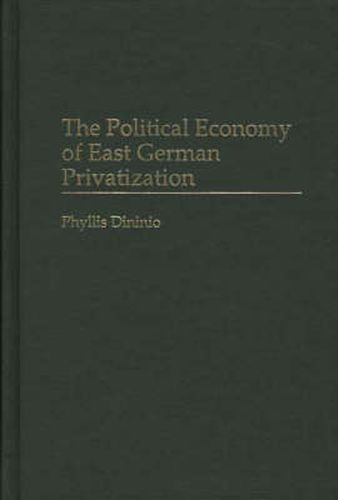Readings Newsletter
Become a Readings Member to make your shopping experience even easier.
Sign in or sign up for free!
You’re not far away from qualifying for FREE standard shipping within Australia
You’ve qualified for FREE standard shipping within Australia
The cart is loading…






This text examines patterns of industrial assistance in the German Lander (federal state) during the difficult transition from central planning to a market economy. The author identifies the restructuring assistance given by the privatization agency, the Treuhandanstalt and the federal state governments as the chief instruments of eastern industrial policy. In seeking to explain how the aid was allocated the interests and policy resources of state and societal actors are examined. The analysis shows that institutions conditions to a significant extent the societal forces to which state actors respond in their policy choices. In the case of East Germany, the interplay of institutions and circumstances led to a large-firm bias. The unitary business and labour organizations that were extended into the East could not accommodate the divergent interests of members and so failed to lobby on their behalf for industrial assistance. While societal actors remained relatively passive, state actors intervened on behalf of select firms. The primacy of certain state actors but not others in these interventions as well as their primary policy agendas, derived from the institutional contours of the German polity. First, the constitution of a federal agency to privatize 13,000 firms singly and under severe time pressure prompted agency officials to give priority to large firms in the interest of expediency. Second, the dominance of the executive branch, enabled Chancellor Kohl to help his supporters in the chemical industry and at Carl Zeiss Jena as well as troubled firms of national significance, such as the shipyards and the giant steel milk EKO-Stahl. Third, the federal structure of the government gave Lander officials significant resources to support big employers in their state, especially those from regionally dominant industries.
$9.00 standard shipping within Australia
FREE standard shipping within Australia for orders over $100.00
Express & International shipping calculated at checkout
This text examines patterns of industrial assistance in the German Lander (federal state) during the difficult transition from central planning to a market economy. The author identifies the restructuring assistance given by the privatization agency, the Treuhandanstalt and the federal state governments as the chief instruments of eastern industrial policy. In seeking to explain how the aid was allocated the interests and policy resources of state and societal actors are examined. The analysis shows that institutions conditions to a significant extent the societal forces to which state actors respond in their policy choices. In the case of East Germany, the interplay of institutions and circumstances led to a large-firm bias. The unitary business and labour organizations that were extended into the East could not accommodate the divergent interests of members and so failed to lobby on their behalf for industrial assistance. While societal actors remained relatively passive, state actors intervened on behalf of select firms. The primacy of certain state actors but not others in these interventions as well as their primary policy agendas, derived from the institutional contours of the German polity. First, the constitution of a federal agency to privatize 13,000 firms singly and under severe time pressure prompted agency officials to give priority to large firms in the interest of expediency. Second, the dominance of the executive branch, enabled Chancellor Kohl to help his supporters in the chemical industry and at Carl Zeiss Jena as well as troubled firms of national significance, such as the shipyards and the giant steel milk EKO-Stahl. Third, the federal structure of the government gave Lander officials significant resources to support big employers in their state, especially those from regionally dominant industries.